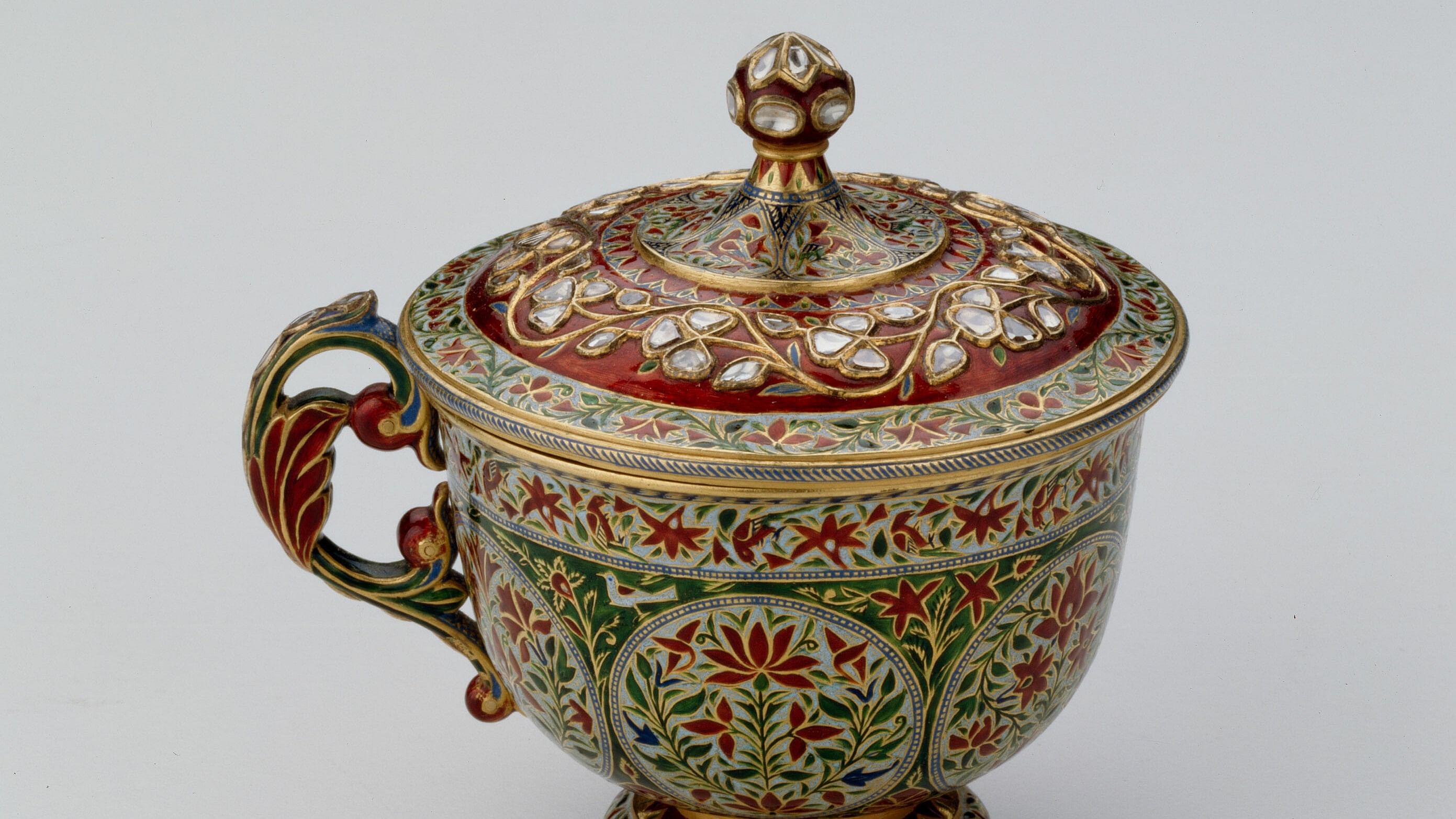
Wine Cup with cover, India, 1701–1900, gold and diamonds inset in the Kundan technique, with polychrome enamel (minakari).
Credit: Art Institute of Chicago
The Kundan gem-setting technique is a uniquely South Asian jewellery tradition that uses pure, unheated 24-karat gold in the form of finely beaten foil, known as Kundan, to adorn opulent pieces of jewellery such as necklaces, earrings, as well as utilitarian objects as spoons, and mirrors. Although originating in the 16th century in the Rajput courts of Rajasthan and Gujarat, the art form found great patronage amongst the Mughals, and later, the Nizams of Hyderabad. Today, Kundan pieces — bearing centuries of regal heritage in their intricate designs — have become prized heirlooms, often handed down from one generation to the next in bridal trousseaus.
In the Kundan technique, the base setting, or ghat, of the jewel is first made in 22-karat gold, with cavities reserved for each gemstone. These cavities are filled with a mixture of shellac and antimony, called surmai, which is heated and melted with the help of hot coal. Each fragment of the gemstone — usually polkis (uncut, unpolished diamonds) but also emeralds, rubies and sapphires — is then delicately placed onto the shellac and gently pressed.
Simultaneously, another round of heat is applied which re-melts the shellac, allowing it to expand and snugly accommodate the gemstone. Any excess surmai surrounding the gems is carefully removed using a fine chisel, creating a slender gap between the gem and the setting. This is followed by enamelling, or meenakari, where the engraved gold surface is enhanced by filling it in with various coloured enamels. Finally, fragments of Kundan are added to the edges and folded in using a chisel, creating a wedge that firmly secures the gem. Layers of Kundan are added until the gap between the gemstone and the setting is sealed and filled in with gold. Traditionally, specific craftspersons were entrusted with different stages of the jewellery-making process. For example, the chiterias were responsible for creating the design, the ghariyas were involved in the engraving and the goldsmiths were known for their exquisite gold framing. However, with the advent of commercialisation and increased market demand, certain compromises introduced themselves. There are now instances of a single artisan assuming all three roles.
Despite the compromises, the sophisticated technique still allows the lapidarist to skilfully encrust a range of fragile bases — including enamel, jade and rock crystal — with an array of gemstones in almost any desired pattern. When worn, the softly rounded edges of the gemstones fuse with the luminous golden frame that envelops and anchors them, glittering and glowing against the skin of its wearer.
Discover Indian Art is a monthly column that delves into fascinating stories on art from across the sub-continent, curated by the editors of the MAP Academy. Find them on Instagram as @map_academy